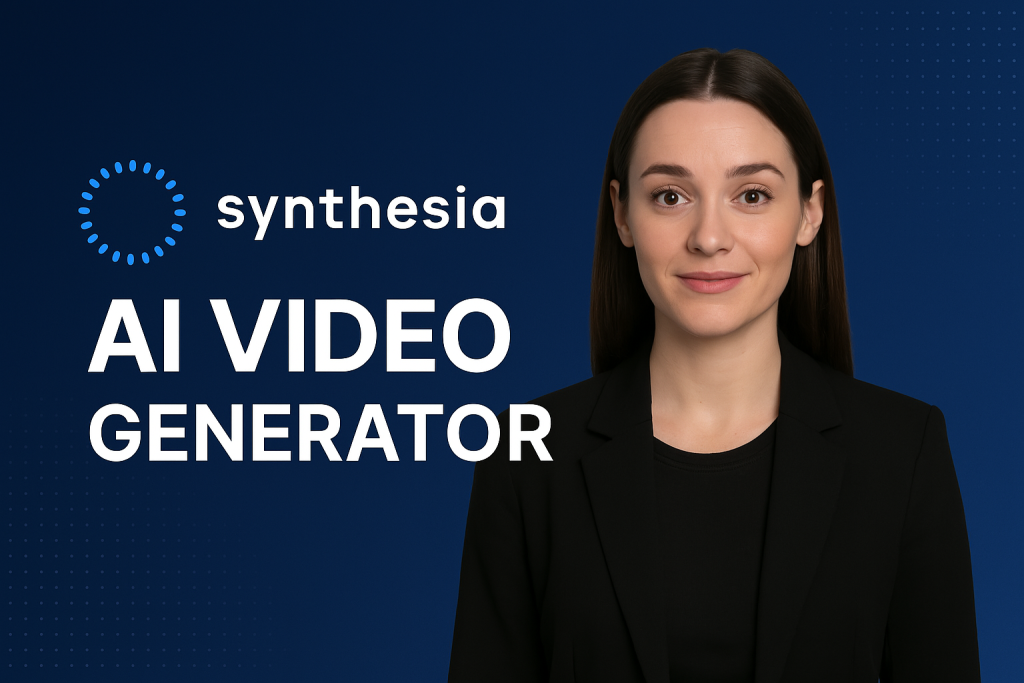The Rise of Synthesia Video: Revolutionizing Digital Content Creation
In the ever-evolving landscape of digital media, technology continues to push the boundaries of how we create, consume, and interact with content. One such innovation that has gained significant attention in recent years is Synthesia, a groundbreaking platform that leverages artificial intelligence (AI) to produce highly realistic video content. Synthesia videos, often referred to as AI-generated or synthetic videos, have transformed industries ranging from marketing and education to entertainment and corporate communication. This essay explores the origins, functionality, applications, benefits, and ethical considerations of Synthesia video technology, shedding light on its role in shaping the future of digital content creation.
What is Synthesia?
Synthesia is an AI-driven video creation platform that allows users to generate professional-quality videos without the need for traditional filming equipment, actors, or studios. Founded in 2017 by a team of researchers and entrepreneurs, including Victor Riparbelli and Steffen Tjerrild, Synthesia emerged from a vision to make video production more accessible, affordable, and efficient. The platform uses advanced machine learning algorithms, natural language processing (NLP), and deepfake technology to create lifelike avatars that can “speak” in multiple languages, delivering scripted content with remarkable realism.
At its core, Synthesia works by combining text input with AI-generated visuals. Users simply type a script into the platform, select an avatar (either a pre-designed digital character or a custom avatar based on a real person), and choose a language and voice. The AI then processes the input, animating the avatar’s facial movements and syncing them with the synthesized voice to produce a polished video. The result is a seamless, human-like presentation that can be customized for various purposes.
How Synthesia Works: The Technology Behind the Scenes
The magic of Synthesia lies in its sophisticated use of AI and deep learning. The platform employs generative adversarial networks (GANs), a type of AI model where two neural networks compete to improve the quality of generated content. One network generates the visuals, while the other critiques them, refining the output until it achieves a high level of realism. This technology, often associated with deepfakes, enables Synthesia to replicate human expressions, lip movements, and even subtle gestures with astonishing accuracy.
Additionally, Synthesia integrates text-to-speech (TTS) systems that produce natural-sounding voices in over 120 languages and accents. These voices are not robotic or monotonous; they carry intonation, emotion, and clarity, making them suitable for professional use. Users can also upload their own voice recordings or hire voice actors, further personalizing the experience. The platform’s ability to translate and localize content instantly—without requiring re-recording—sets it apart from traditional video production methods.
Applications of Synthesia Videos
Synthesia’s versatility has made it a game-changer across multiple sectors. In the business world, companies use Synthesia to create training videos, product demonstrations, and customer support tutorials. For instance, a multinational corporation can produce a single script and generate localized versions for employees or customers in different regions, saving time and resources. Marketing teams leverage the technology to craft personalized advertisements, where avatars address viewers by name or deliver tailored messages, enhancing engagement.
In education, Synthesia has opened new doors for e-learning. Teachers and institutions can create interactive lessons featuring AI avatars that explain complex topics in a clear and engaging manner. This is particularly valuable for language learning, where students can hear native-like pronunciation in various dialects. Moreover, the platform’s accessibility allows educators with limited budgets to produce high-quality content without investing in expensive equipment.
The entertainment industry has also embraced Synthesia, albeit cautiously. Filmmakers and content creators experiment with synthetic actors for short films, commercials, or even video games, reducing production costs and enabling rapid prototyping. News outlets have used the technology to deliver multilingual broadcasts, while influencers and creators explore it for scalable content production.
Benefits of Synthesia Video Technology
The advantages of Synthesia are numerous, making it an attractive tool for individuals and organizations alike. First and foremost is its cost-effectiveness. Traditional video production involves hiring actors, renting studios, and editing footage—a process that can cost thousands of dollars. Synthesia eliminates these expenses, allowing users to create videos for a fraction of the price. Small businesses and startups, in particular, benefit from this democratization of video content creation.
Speed is another key benefit. A Synthesia video can be produced in minutes, compared to the days or weeks required for conventional filming. This rapid turnaround is ideal for time-sensitive projects, such as breaking news updates or last-minute marketing campaigns. Furthermore, the platform’s scalability enables users to generate hundreds of videos simultaneously, each tailored to a specific audience.
Synthesia also offers unparalleled flexibility. Edits are as simple as tweaking the script—no reshoots or re-recordings are necessary. The ability to update content instantly ensures that videos remain relevant and accurate, a feature especially useful for industries like technology and healthcare, where information evolves quickly.
Ethical Considerations and Challenges
Despite its many benefits, Synthesia’s rise has sparked ethical debates, particularly around the potential for misuse. The same technology that powers Synthesia videos is closely related to deepfakes, which have been used to create misleading or harmful content, such as fake political speeches or fabricated celebrity endorsements. This raises concerns about misinformation, identity theft, and the erosion of trust in digital media. To address these risks, Synthesia has implemented strict policies, requiring user consent for custom avatars and prohibiting malicious use of the platform.
Another challenge is the uncanny valley effect—a phenomenon where synthetic humans appear almost real but subtly unnatural, causing discomfort among viewers. While Synthesia’s avatars are highly advanced, they are not yet indistinguishable from real people, which may limit their appeal in certain contexts. Additionally, the reliance on AI voices, though impressive, sometimes lacks the emotional depth of human performance, potentially reducing the impact of storytelling.
The technology also poses questions about job displacement. As Synthesia streamlines video production, roles like actors, videographers, and editors may face reduced demand in some sectors. However, proponents argue that it creates new opportunities, such as AI content design and script optimization, shifting rather than eliminating jobs.
The Future of Synthesia and AI Video
Looking ahead, Synthesia is poised to play a central role in the future of digital communication. As AI technology advances, we can expect even more realistic avatars, improved voice synthesis, and greater integration with virtual reality (VR) and augmented reality (AR). Imagine immersive training simulations where AI avatars guide users through lifelike scenarios, or interactive customer service bots that appear as friendly, talking holograms.
Synthesia’s developers are also exploring ways to enhance personalization, such as allowing users to create avatars that mimic their own likeness and voice with minimal effort. This could revolutionize personal branding, enabling individuals to scale their digital presence effortlessly. At the same time, the platform must navigate regulatory landscapes, as governments worldwide grapple with how to govern AI-generated content.
Conclusion synthesia ai video generator
Synthesia video technology represents a bold leap forward in the democratization of content creation. By harnessing the power of AI, it offers a fast, affordable, and flexible alternative to traditional video production, empowering businesses, educators, and creators to connect with audiences in innovative ways. While challenges like ethical concerns and technical limitations remain, the potential for positive impact is immense. As Synthesia continues to evolve, it stands as a testament to the transformative power of artificial intelligence, redefining how we tell stories, share knowledge, and engage with the world.




